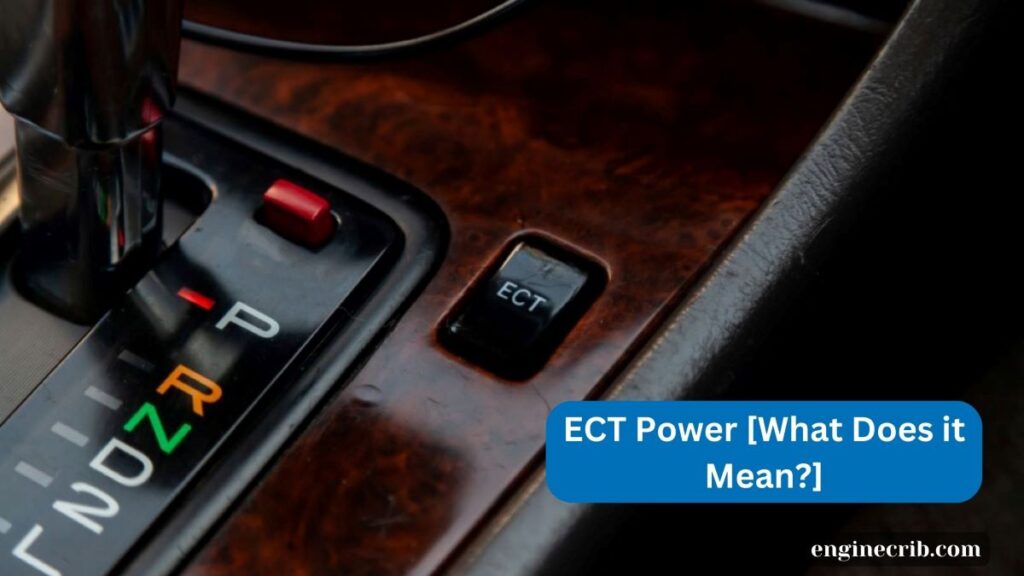ECT Power stands for Electronically Controlled Transmission Power. It is a feature found in some Toyota vehicles, such as Toyota Tacoma. This power button helps to provide better performance and acceleration when needed. It operates by using an electrical solenoid.
Have you ever seen an ECT PWR button in your Toyota and wondered why it’s there and what’s meant for?
We encourage you to keep reading because in this post we will help you gain clarity on Ect Power, how it works, and the role it plays in your car.

What is ECT Power in Toyota?
The ECT system, which is an acronym for “Electrically Controlled Transmission,” is an automatic gearbox that controls your car’s pace and gearshifts using computers. This system allows you to customize your driving experience by providing a variety of transmission settings and gearshift locations.
An electrical solenoid controls the hydraulic mechanism of this switch, which controls the bands and clutches inside the gearbox. When you hold the ECT power button, you can modify shift points and increase your RPM before shifting into the next gear.
It’s important to note that not all Toyota vehicles have the ECT Power feature, and it may be labeled differently or absent in other brands. However, it is an added feature of the standard six-speed electronically controlled automatic transmission in the Toyota Tacoma.
How Does Toyota Tacoma ECT PWR Work?
This button is located just below the Toyota infotainment system in the center stack. When pressed, the ECT PWR button will increase power. When in use, it engages hydraulics within the transmission to operate clutches and bands that are managed by an electronic solenoid.
These components work together to enable the transmission to maintain shift points for a longer period and reach higher RPM levels before shifting. A quick power boost and improved throttle control will result from this. To turn off the ECT feature, you can go ahead and press the button a second time.
When Should I Use Toyota Tacoma ECT Power?
You can activate the power button when you need an immediate power boost. This could be when you are trying to overtake a vehicle or climbing a long hill. Also, you can engage your power button when towing a trailer or any other vehicle.
Remember, when you engage the ECT Power, the transmission will shift at higher RPMs, which provides a more aggressive acceleration curve. This can also result in increased fuel consumption, so it is recommended to use this feature sparingly and only when necessary.
Cons of the ECT Power Button
1. Consumes More Fuel
Driving a long distance with an activated Ect power button takes consumes lots of fuel. Therefore, if you want better gas mileage, ECT Power is not a good choice because it will consume more fuel than usual.
2. Increases Wear and Tear
Pressing the ECT power button makes your engine run faster. This implies that it will also accelerate the deterioration of your Toyota’s engine parts, tires and other parts of the car.
FAQ
What’s the Difference Between ECT Power and ECT Manual?
Both switches affect the transmission performance of your car. The ECT power enables the transmission’s change points to change, resulting in a sportier shift pattern. Although, it will hold in some gears longer before shifting, just like a manual transmission.
However, the ECT manual helps to lessen the wheel spin when starting on ice or snow. When both switches are off, the transmission is in a mode that ought to offer the best overall vehicle economy and drivability.
Read: Mercedes Pre-safe Functions Limited
Conclusion
ECT Power is a button found in some Toyota vehicles which provides better performance and acceleration when needed. It helps to increase power by engaging hydraulics within the transmission. To maintain shift points for a longer period and reach higher RPM levels before shifting.
When activated, it can provide a quick power boost and improved throttle control. However, it can also consume more fuel than usual and accelerate the deterioration of the engine parts and other parts. We recommend you use this feature sparingly and only when necessary.